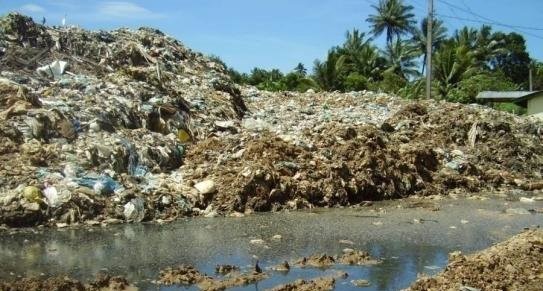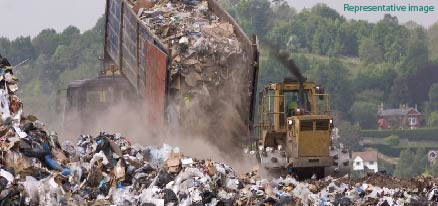
On 14th March 2023, in Brahmapuram, Kerala, the mountainous heap of waste-mix, consisting of biodegradable and non-degradable materials, which was on fire for 12 days, got extiguished completely thanks to the firefighters of the state Fire Force for their round-the-clock hard work.
The 110 acres landfill site located at Brahmapuram is owned and operated by the Kochi Corporation,
It’s been 16 years since the waste dumping began at Brahmapuram dump yard. Though the plant was inaugurated to manage solid waste, of late it was eventually converted into a landfill. It was estimated that about 5.5 lakh cubic meters of waste accumulated in the site over the years.
The site has been in news for the environmental pollution, fire hazards, and public health and safety issues caused by it since its beginning.
Currently, nearly 390 tonnes of waste is dumped at the Brahmapuram landfill every day by the 21 lakh population of the Kochi urban agglomeration, which includes Kochi Corporation as well as five neighbouring municipalities and two panchayats. About 64 percent of this is biodegradable while the rest is plastic and other non-biodegradable material.
Although the fire and the dark fumes started to rise before a week triggering the fear of air pollution again, the actual intensity of the dump of waste on the surroundings is yet to be ascertained. While respiratory problems are widely reported as a result of the fire, the chances of other long-term complications are looming large.
A few years ago, it was found that the leachate from the Brahmapuram landfill is severely polluting the nearby river Kadambrayar. When waste is placed in landfills, over time the waste decomposes and sweats. This liquid, leachate, is hazardous and must be collected for disposal or treated. Especially during the rainy days, the water in the course of passing through a mix of plastic and other waste materials in the landfill, extracts soluble or suspended solids, or any other component of the material through which it has passed.
Landfill leachate, which contains many toxic and harmful substances such as heavy metals, persistent organic pollutants and bacteria, has become one of the main anthropogenic sources of groundwater pollution from landfills.

Hence a specialized draining system should be in place that collects this leachate, to manage landfills safely, without harming people, animal life and environment.
Because, once exposed to the human body through drinking or bathing, the groundwater polluted by leachate will cause various aquagenic diseases besides stimulating ecological problems such as water blooms and soil salinization. For instance, drinking groundwater polluted by heavy metals such as manganese and arsenic in leachate for a long time will increase the risk of cancer and infant death, as well as induce motor and cognitive dysfunction in children.
Leachate generated at the dumping yard could be treated in septage treatment plants with the help of IoT based real time monitoring (RTMs) systems to ensure efficient functioning of treatment plants and quality of the recycled water. The RTMs will help to ensure that the effluent disposed to water bodies are safe for human beings, animal life and environment. It is also highly important to monitor the water extracted from natural water bodies in the surrounding areas on a real time basis to ensure that it is safe for consumption.
At times, when Kerala is heading towards one of the hottest summers ever, where severe scarcity of water looms large and several fresh water bodies have already started to dry up, special emphasis is needed to ensure the purity of the freshwater resources.
